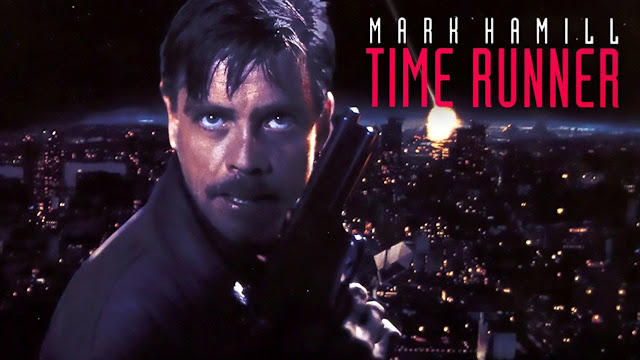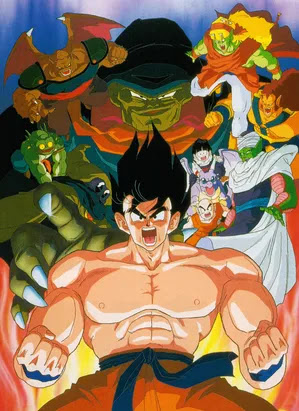PHENOMENALITY: *marvelous*
MYTHICITY: *good*
FRYEAN MYTHOS: *drama*
CAMPBELLIAN FUNCTIONS: *metaphysical, psychological*
*SPOILERS SPOILERS SPOILERS*
Since so few readers of this blog respond with comments, I don't know if anyone pays attention to the spoiler warnings. But anyone interested in my musings on THE WOLFMAN should take them seriously, because here's the film's Big Reveal: Daddy Done Did It.
For many reviews of high-mythicity films, I like to go through the stories in detail, to show how the author builds his or her symbolic propositions. But though the 2010 WOLFMAN has a fair claim to good mythicity, it never comes close to the 1941 classic it reworks (not being in any real sense a "remake.") WOLFMAN is a splashy modern spectacle which conceives a reasonably coherent take on the original's psychological myths, as well as throwing in a few new touches. But it can't come close to evoking the mythpoeic intensity of the Lon Chaney Jr classic.
In contrast to the 1941 film, WOLFMAN makes a pretense of cloaking in mystery the identity of the werewolf who infects Lawrence Talbot (Benicio del Toro). I'm not going to claim I guessed the lycanthrope's identity whenever I first saw the flick, but there's no other suspect in sight but Lawrence's weird-acting old man, Sir John (Anthony Hopkins). Not even the injection of Singh, a dutiful Sikh manservant to Sir John, creates a moment's red herring suspicions.
Here's what I wrote about the psychological myths of the 1941 WOLF MAN:
Though I used the term ‘family romance” above, I disagree with James Twitchell and all other critics who have attempted to impose a Freudian reading on the film. It’s closer to Adler and his concept of compensation, particularly the sort arising from sibling rivalry. Siodmak might never have read Adler, but going by his biographies the writer apparently experienced in real life some of the same sibling competition that the psychologist did. Siodmak probably was generally aware of the way Freud had applied psychological theory to ancient myth and legend, though, and thus Freud probably influenced the author’s psychologized reworking of werewolf folklore.
Sibling conflict is only dimly suggested in the film’s first scenes. Sir John’s elder son has perished in a hunting-accident, and this apparently obliges the lord of the Welsh village to summon his younger son Larry to Talbot Castle. When they meet, Larry and Sir John circuitously discuss the argument that caused Larry to emigrate to America for many years. (In theory this explains Chaney’s strong American accent, though to be sure a lot of the Welsh residents don’t sound all that British.) There’s a charming attempt at father-son dialogue, though it doesn’t quite conceal the fact that Sir John has mended fences not purely out of paternal love, but because he needs a successor to become the new lord of the estate when John, the old lord, inevitably passes.
There's no rational-minded, overbearing dad this time. Scripters Walker and Self wanted a Heavy Father straight out of Freud's TOTEM AND TABOO. The original Larry Talbot left the British Isles for America for reasons loosely associated with sibling rivalry. In contrast, Lawrence is sent to an asylum after he, as a child, claims to have witnessed Sir John's act of uxoricide, slaying Lawrence's mother during one of the lord's beast transformations. (Lawrence, unlike Larry, at least has a mother in his story.) After years of being treated by the barbaric alienists of the late 1800s, Lawrence recants his story and becomes an actor. (I'm convinced Walker and Self made this alteration to the protagonist's background simply so that they could reference HAMLET, which Freud famously associated with Oedipal urges.)
Naturally one victim is not enough for the beast. Sir John conceives that the fiancee of his other son Ben bears a resemblance to Ben and Lawrence's mother, and so Sir John doesn't want Gwen (Emily Blunt) to leave. For years the lord has been caged on full-moon nights by the Sikh servant to keep the beast from preying on the locals and inciting a beast-hunt. But one night Sir John's beast does get loose, and that's the end of Ben. His disappearance causes Gwen to write to Lawrence, who returns to his ancestral home and learns of Ben's curious death.
Ben's gory murder incites great fear in the entire community, which Walker and Self may have moved to 1891 so that their superstitions about werewolves would seem more credible to audiences. Though viewers never know much about the sibling relationship of Lawrence and Ben, Lawrence is determined to ferret out his brother's murderer, little suspecting that by doing so he'll solve the mystery of his (Lawrence's) own victimization. When the locals suspect that the beast may have come from an itinerant gypsy caravan, Lawrence seeks the gypsies out-- and, like Larry before him, Lawrence also encounters a werewolf and sustains a lycanthropic bite. (This is Sir John, though he appears in full-wolf form this time, not as the wolf-human hybrid seen elsewhere.)
Freud hypothesized that children who witnessed their parents having sex for the first time-- the so-called "primal scene"-- might believe that the mother was being attacked, or even murdered. Lawrence sees his mother murdered for real, and then his brother is slain because his father craves the brother's future wife. Decorum perhaps keeps Sir John from making any overt moves upon the grieving Gwen. Yet though Gwen has never met Lawrence before, she falls for him, thus becoming yet another competitor for the prize Sir John wants-- though I believe Sir John's beast bites Lawrence before the former can possibly know about any romantic inclinations between Lawrence and Gwen. Old Sir John just wants any excuse to let the beast out.
I've emphasized the things Sir John did, more or less in reverse order from the way film shows them, because that character has the most agency in the film. The 1941 film focuses far more on Larry Talbot, on his attitude toward family and romantic horizons, and to his struggle with his altered identity. But to make the mystery work, Walker and Self placed far more emphasis on Sir John's actions. The result is that Lawrence Talbot isn't nearly as well developed as his 1941 model, though he sustains a minor myth as "the victimized son" a la Hamlet. For that matter, Gwen Conliffe is not much better off, though after a big climax in which Lawrence slays his evil father, Gwen assumes the role seen in HOUSE OF FRANKENSTEIN, the girl who slays the werewolf to prevent his suffering.
One of the more interesting Walker-Self changes is the origin of the werewolf curse, in that the script totally exonerates the gypsies. Nevertheless, the "old gypsy woman" trope is played for its expected effect, with fortune teller Maleva filling in some of the blanks about werewolf lore. (The 1941 "silver cane" makes an appearance, but the feature release cut a scene regarding its origins.) The script also includes a policeman who pursues Lawrence, loosely like the "cop" from the 1941 film, though the script's investigator is based on the real life Fred Abberline, one of the men who sought to track down Jack the Ripper.
This time out, the curse comes from India (which, perhaps coincidentally, is one of the lands that may have spawned the medieval gypsies.) In 1891 the British still had control of India, which may be another reason for the time-switch, to line up with colonialism. The script tells us only that Sir John was hunting in India with his manservant when he encountered a feral Indian boy. The boy bit the Brit, and after that, he, not a gypsy caravan, is responsible for carrying the curse to Britain. (The aspect of the movie's structure bears some resemblance to the 1966 Hammer film THE REPTILE, which also involved a monstrous infection propagated during colonial times.)
Sadly, neither good mythicity nor state-of-the-art werewolf FX kept WOLFMAN from bombing at the box office, though it might have done better business had the producers eschewed so many FX scenes.





















